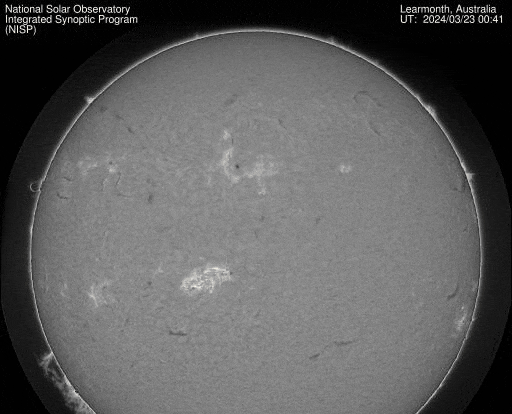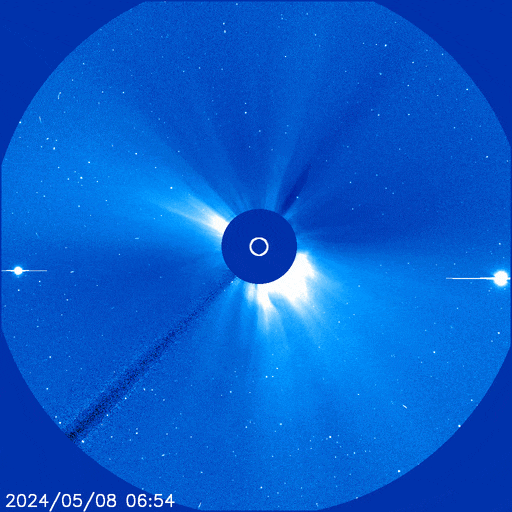NTP2
Well-Known Member
Yup it’s part high tech satellites and part people in cubicles counting sun spots (I did it once, never again).Fascinating how they have the ability to measure events.

Yup it’s part high tech satellites and part people in cubicles counting sun spots (I did it once, never again).Fascinating how they have the ability to measure events.

Aha! The true cause of global warming!From spaceweather.com:
CME REPORT: A NASA model of recent CME activity suggests that a solar storm cloud could graze Earth's magnetic field during the early hours of April 26th. The slow-moving CME is heading mostly south of our planet, but its northern flank could deliver a glancing blow sufficient to spark a minor G1-class geomagnetic storm. CME impact alerts: SMS Text
RAPID-FIRE PLASMA JETS: Sunspot complex AR3638-47 has been in a almost-constant state of eruption for days. This animation from earlier today shows multiple jets of plasma shooting into space in only a few hours:
Since last week, dozens of these jets have flown away from the sunspot group. All of them have missed Earth. The magnetic structure of the sunspot complex is guiding debris to the south--just far enough to miss our planet when the resulting CMEs pass nearby.
An exception might be on the way. One of the jets emitted on April 22nd *might* have an Earth-directed component. ETA: April 26th. Stay tuned. CME impact alerts: SMS Text
Oddly enough, I always thought it was the true cause of ice ages! But I really don't know.Aha! The true cause of global warming!


Amazing display, SE Wisconsin this morning @ 0130-0300+ hours!!!I talked to my friend in Eugene Oregon at 11pm PST and he told me they could see the Aurora there. He told me it could be seen in Northern California too.
Boston area, last night, 10sec exposureAmazing display, SE Wisconsin this morning @ 0130-0300+ hours!!!
@lakeroadster did you see anything?Colorado Springs, looking north over the combined light domes of the Springs and Denver not long after full dark. 30-second exposure and post processing to bring out colors. Visually, we could see a pale ghost to suggest there was something there.View attachment 644835
@lakeroadster did you see anything?
If only you had Geiger counter! I forgot you lived at altitude, it would be cool to see the what got through the magnetic field and the atmosphere (presumably quite a lot considering the aurora).Snowy, cloudy & overcast up here at 8,200 feet. Bummer.
Enter your email address to join: